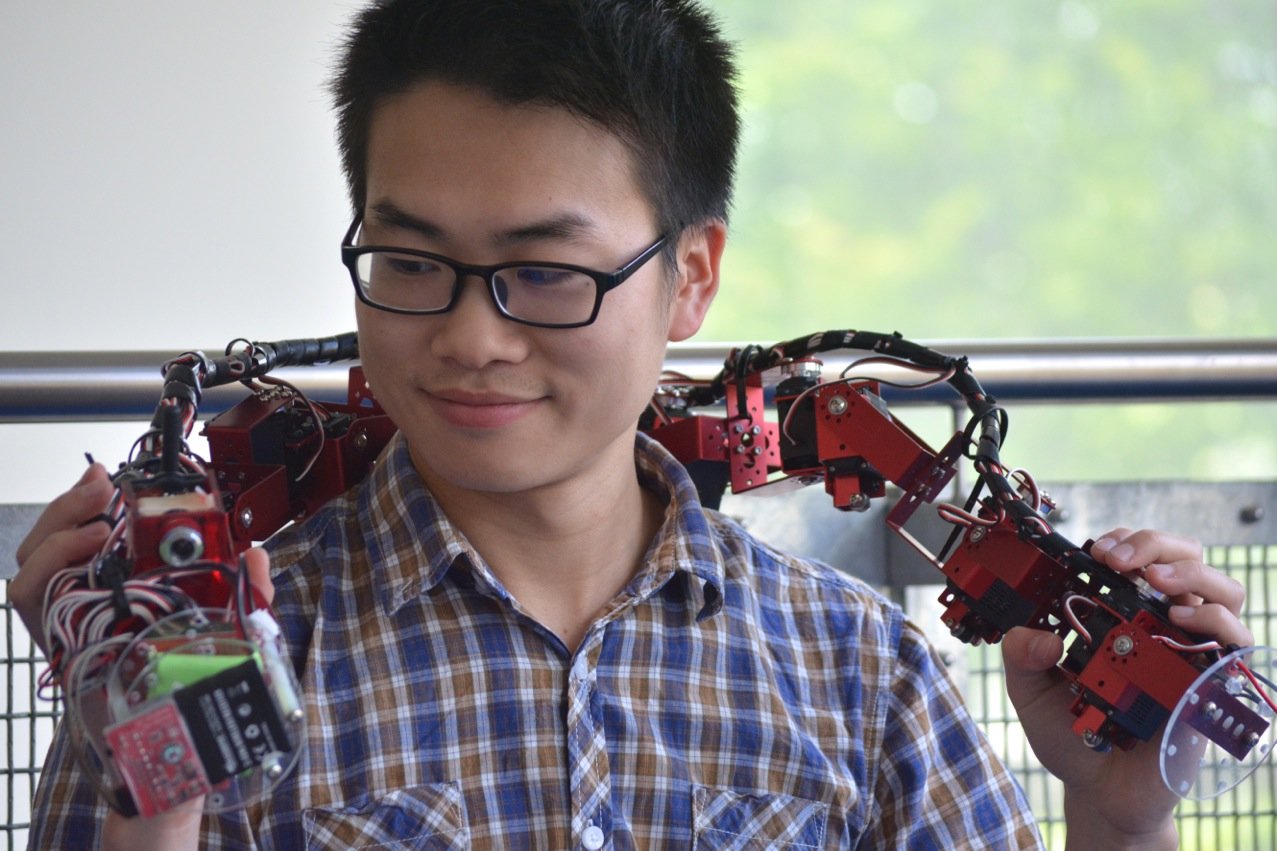A ‘snake’ that doesn’t bite: University of Waikato student builds earthquake rescue robot snake

Still in it’s initial stages, the 24-year-old has produced a remote-controlled robotic rescue snake with a wireless camera mounted on its head. The university is funding the project, which could be commercialised in 1-2 years.
The snake has eight joints, nine segments, 16 motors and 19 wheels and has the same locomotion as a snake, moving in a curving line.

Jin says this is its strength compared other rescue robots, as the snake is more flexible than most in its movements.
It’s also remote controlled by a wireless joystick – which looks like a Playstation controller – and has a one second lag time to the software on Jin’s computer.

Currently it can only move on flat surfaces, but Jin hopes once developed, it can help earthquake-ridden countries such as Japan and New Zealand in their search and rescue operations.
“It’s quite useful and quite meaningful. We could save lives in the future,” Jin says.
One problem he and his supervisor have to solve is that the 16 motors draw too much current, meaning a two-hour charge only allows the snake to operate for 10 to 15 minutes.
Jin and his supervisor want to further develop this, as well get the snake to be able to move up and down “like a caterpillar” to manoeuvre over obstacles with ease.

“In the future we’d like to have a GPS sensor and other things to gain more intelligence and give us more information on the situation.”
He says any willing students will continue the project when he finishes his masters.
Supervisor of the project and mechanical engineering lecturer Chikit Au says the real challenge ahead of them is to make the snake workable in application.
“There are several institutes in the world working on these kinds of snakes and it’s not difficult to built them, but to actually put them into real application, we are all working on that,” Au says.

He says they have no plans to patent the snake’s technology, as it hinders the ability to collaborate and is a “waste of resources”.
“I have no intention to patent, because it means we don’t want to share with others. If you want the technology to develop faster with more discussion, then you need to share it,” he says.
He expects the technology to be able to be commercialized in 1 to 2 years.




